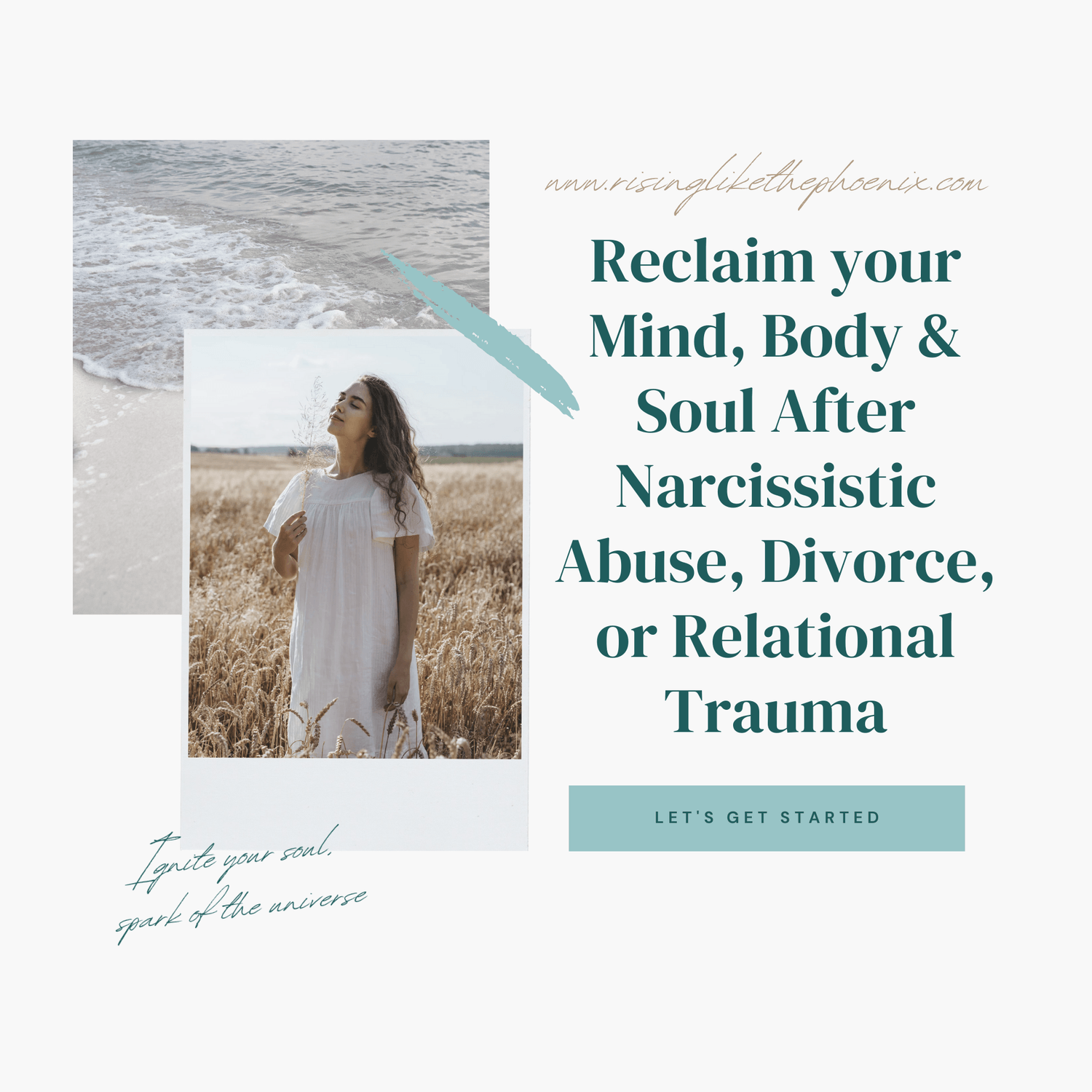Reclaiming Joy: How to Find Happiness Again After Narcissistic Abuse
Introduction: The Quiet Return of Joy
After narcissistic abuse, joy can feel like a distant memory, something you once knew but no longer recognize. Many survivors describe feeling numb, exhausted, or stuck in survival mode. And yet, joy has a way of sneaking back in when you least expect it. Maybe it’s the sound of laughter you thought you’d lost forever, or a moment in nature that catches you off guard. These glimpses are not accidents; they’re the beginning of your emotional healing and a signal that happiness is not gone, just waiting to be welcomed back.
This post explores how joy returns in small, unexpected ways and offers gentle, practical strategies for embracing it as part of your narcissistic abuse recovery journey.
Why Joy Feels Out of Reach After Narcissistic Abuse
Abuse leaves survivors depleted, not just of energy but of their sense of self. The constant invalidation, manipulation, and control often erase moments of lightness and pleasure.
- Hypervigilance blocks joy. Survivors are often on alert for danger, leaving little space for playfulness or relaxation.
- Self-blame silences happiness. After enduring gaslighting and devaluation, it may feel selfish or unsafe to enjoy life again.
- Grief takes time. You’re not just healing from the person but from the dreams and years that were stolen.
Understanding why joy feels absent is not a sign of failure; it’s a sign of your resilience. Your body and mind protected you by focusing on survival. Now, as safety grows, there’s room for joy to land.
The First Signs of Joy Returning
Joy rarely arrives with a fanfare after trauma. Instead, it tiptoes in. Recognizing these subtle moments is part of the healing process:
- Smiling at a stranger without fear.
- Laughing at a silly TV show or meme.
- Taking pleasure in a cup of coffee or tea.
- Feeling curious about learning something new.
- Catching yourself singing along to music.
These are not “small things.” They’re powerful indicators that your emotional healing is underway. Each moment is a green light signaling that your heart is slowly reopening.

Practical Ways to Invite Joy Back
Start with a Gratitude Practice
Gratitude doesn’t erase pain, but it shifts focus toward what’s still good. Begin with just three things each day: sunlight, a kind word, and a meal you enjoyed. Over time, gratitude builds neural pathways that make it easier to notice happiness.
Create Daily Joy Rituals
Joy rituals are small, intentional practices that reconnect you to pleasure. Examples include:
- Lighting a candle while journaling.
- Taking a short morning walk.
- Listening to uplifting music before bed.
- Spending 10 minutes on a creative hobby.
These rituals are not luxuries; they’re anchors of well-being.
Reconnect with Self-Discovery
During abuse, your interests and preferences were often dismissed or mocked. Now is the time to rediscover them. Ask yourself:
- What activities made me happy before the abuse?
- What do I feel curious about trying now?
- What brings me peace when no one else is watching?
Whether it’s watercolor painting, gardening, or traveling to new places, self-discovery is the gateway to authentic happiness.
5 Steps to Reclaim Your Life
A practical guide to reclaiming your confidence, setting boundaries, and moving forward—without second-guessing yourself.
Embrace Nature and Movement
Nature heals by grounding us in the present. Even sitting outside for five minutes can lower anxiety and create space for joy. Pair this with gentle movement, yoga, stretching, or walking, to help your body release stored tension.
Build Connections That Spark Joy
Toxic relationships strip away community. Rebuilding safe, supportive connections helps joy flourish. Reach out to old friends, join a support group, or volunteer in your community. One of the things I did was take my child to the animal shelters to play with the kittens and puppies. It was a win-win for all of us! Surrounding yourself with people who celebrate you makes it easier to trust happiness again
Overcoming the Guilt of Feeling Happy
Many survivors wrestle with guilt when joy returns. You may hear an inner voice say: “How can I be happy after what I went through?” or “Do I deserve this?”
The truth is: joy is not a betrayal of your past, it’s a reclamation of your future. You endured pain you did not deserve. Allowing yourself to feel joy is part of breaking free.

Remember: healing doesn’t mean ignoring the wounds; it means giving yourself permission to rise beyond them.
Joy as a Measure of Healing
Joy is more than a fleeting feeling; it’s a measure of your progress. Each smile, laugh, or peaceful moment shows that you are reclaiming your power. Healing is not linear, but joy is a reliable sign that you are moving forward.
As you reclaim joy, you also reclaim mental health, emotional freedom, and well-being. Joy becomes both a compass and a celebration: proof that the storm has passed and that you are free to create a life filled with color, curiosity, and love.
Practical Takeaway: Your Flight Plan for Joy
Because your journey is uniquely yours, think of joy as a flight plan:
1. Check Your Instruments (Self-Awareness): Notice when joy shows up in your day.
2. File Your Flight Plan (Intention): Choose one small joy ritual to practice daily.
3. Lift Off (Action): Allow yourself to participate fully in joyful moments without judgment.
4. Navigate Turbulence (Compassion): If guilt or sadness resurfaces, remind yourself that healing is not a straight line.
5. Celebrate Safe Landings (Integration): Acknowledge and honor your moments of joy, they are victories worth celebrating.
For more insight into finding joy, go to: Good Therapy
Conclusion: The Phoenix Rises with Joy
Reclaiming joy after narcissistic abuse is not about forcing happiness; it’s about noticing and nurturing the sparks that naturally return once you are safe. Joy doesn’t deny your pain; it coexists with it, reminding you that you are alive, resilient, and worthy of love.
Like a phoenix, you rise not just from ashes but toward light. Joy is the proof that your wings are strong again, and the sky is waiting.
FAQ: Reclaiming Joy After Narcissistic Abuse
Healing is different for everyone. Some notice joy within months, while for others, it takes longer. Be patient with yourself; joy will return when you are ready.
Guilt is common but misplaced. You deserve happiness; it’s part of your recovery. Try affirmations like, “Joy is my birthright.”
Yes. Therapists can guide you through trauma release, helping you make space for joy with tools like EMDR, somatic therapy, or CBT.
If happiness feels forced or inauthentic, pause. Focus on small, genuine pleasures rather than striving for constant positivity.
Incorporate joy rituals, small practices like gratitude journaling, morning walks, or creative hobbies, that invite happiness naturally.
Towards Finding Joy:
Diane’s upcoming course A Girlfriends' Guide to the Other Side dives deeper into practical boundary-setting strategies and offers exercises to help you strengthen this vital skill.
If you want to be notified of it's launch early next year register for our Rise Weekly Newsletter where Diane will keep you informed weekly of it's progress and other suggestions toward your healing journey.
Remember you are not alone

Hi, I’m Diane – and I’m so glad you’re here
Diane is the author of A Girlfriend’s Guide to the Other Side: Reclaim Your Mind, Body, and Soul After Narcissistic Abuse, Divorce, or Relational Trauma.
After surviving the wreckage of a controlling relationship that stripped her identity, she turned her pain into purpose. Through her book, course, and community, Diane now guides women on the journey of rebuilding self-worth, setting healthy boundaries, and reclaiming their lives.
Her mission is simple: to remind every woman that healing is possible, and that your future can be brighter than your past.
Categories
Rise Weekly Newsletter
Because healing isn’t just about surviving, it’s about rising. Rise Weekly delivers empowering insights, gentle reminders, and soulful tools to help you reclaim your strength, set powerful boundaries, and rebuild a life that feels like you. If you're ready to rise above trauma and step into your next chapter with clarity and courage - this is your space.
Created by © Suzanne Startari with systeme.io





